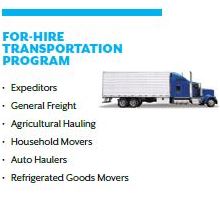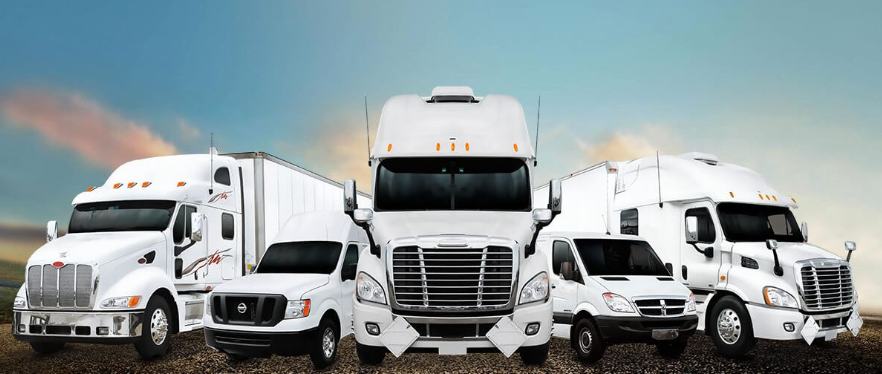How to buy commercial fleet auto insurance for Big Rig Semi’s.

Commercial Fleet Auto Insurance / transportation business insurance for Big Rig Semi-Trucks is an essential form of coverage that provides financial protection against physical damage and liability arising from vehicle accidents. It can also provide coverage for medical expenses, lost wages, and death benefits. For companies that operate commercial vehicles such as semi-trucks, comprehensive auto insurance is a necessity.
This page provides a comprehensive overview of the different types of commercial fleet auto insurance available for big rig semis, as well as guidance on how to purchase the most beneficial coverage for your business. We have the best commercial truck insurance for new drivers!
Request help with insuring your fleet of big rig semi’s.
Types of Commercial Fleet Auto Insurance coverage for Big Rig Semi-Trucks
There are a variety of commercial fleet auto insurance policies available for big rig semi-trucks, each designed to meet the needs of different types of businesses. The types of coverage can include:
Liability Coverage: This type of coverage protects against damage or injury occurring as a result of an accident, including third-party property damage, bodily injury, and legal defense costs. It is important to note that liability coverage does not cover damages to the company’s own vehicle or employees.
Collision Coverage: This type of coverage provides protection against damage to the company’s own vehicles in an accident. It typically covers damage to the semi-truck itself, as well as any cargo or equipment loaded onto it. Depending on the coverage and the size of the semi-truck, this can be an expensive form of coverage.
Comprehensive Coverage: This type of coverage protects against damage to the company’s vehicles from anything other than an accident (e.g., theft, vandalism, and weather related events). As with collision coverage, the extent of protection will vary based on the size and value of the semi-truck.
Uninsured/Underinsured Motorist Coverage: This type of coverage provides protection in the event that an uninsured or underinsured motorist is responsible for an accident involving the company’s semi-truck. It covers medical expenses, lost wages, and death benefits sustained by the employees of the company who are involved in an accident involving an uninsured or underinsured motorist.
Truck Physical Damage Coverage: This form of insurance is designed to protect against damage sustained by a company’s semi-trucks due to fire, theft, vandalism, or natural disasters. Depending on the type of policy, physical damage coverage may also include coverage for trailer interchange and expediting expenses.
Personal Injury Protection Coverage: Personal Injury Protection (PIP) coverage provides protection for medical expenses for drivers and passengers injured in an accident involving a commercial vehicle owned by the company. PIP coverage may also be extended to include lost wages, funeral expenses, and other related expenses in some states.
How to Purchase Commercial Fleet Auto Insurance for Big Rig Semi-Trucks
Step 1: Determine Your Needs: When purchasing commercial fleet auto insurance for your semi-truck business, it is important to determine what types of coverage you need and how much coverage will be necessary. Consider things like when and where your drivers will be driving and what kind of cargo you’ll be hauling; this will help you determine which coverages are most suitable for your business operations.
Step 2: Compare Providers and Policies: Once you have identified your insurance needs, it is important to compare different providers and policies to determine which is best suited to meet your needs. Many companies offer discounts for multiple vehicles or multiple policies, so be sure to ask about those when shopping around. When comparing policies, make sure to read through each one carefully in order to ensure that you understand all the coverage details.
Step 3: Review Insurance Companies’ Ratings: Before committing to a particular provider or policy, it’s important to research the company’s customer service and financial ratings from organizations such as J.D. Power or A.M. Best. These ratings provide an unbiased assessment of a company’s customer service standards and financial stability which can help you choose the best option for your needs.
Step 4: Get Quotes: Once you have chosen a few providers and policies that meet your needs and have good ratings, it is time to get quotes before making a final decision. Be sure to provide all relevant information when requesting quotes in order to get an accurate estimate of the cost of your policy.
Step 5: Purchase Your Policy: Once you have found a policy that meets your needs at a price that fits your budget, it’s time to purchase your policy. Make sure to read through all policy documents before signing anything; this will help ensure that you understand the terms and conditions of your policy and will allow you to make any changes needed before finalizing the purchase.
Commercial fleet auto insurance for big rig semi-trucks is an essential form of protection that provides financial security in case of accidents or other damages sustained by company vehicles while on the road. Selecting the right provider and policy is essential so make sure to research different providers, compare policies, review ratings, obtain quotes, and read through all documents before making any decisions. By taking these steps, you can be sure that you purchase a policy that meets all your needs at a price that fits your budget.
Request help with insuring your fleet of big rig semi’s.
Interesting and little know facts about Big Rigs!
Big Rig Trucks are an iconic part of the American landscape, and have been for decades. They are the vehicles responsible for hauling everything from food to furniture to fuel across the country, and they have a long and interesting history. Here are some interesting facts about Big Rig Trucks that you may not have known.
1. The first big rig truck was designed in 1895 by Charles B. King. He designed it as a way to haul ore from a nearby mine to a steel mill.
2. Big rig trucks are not only used to move goods across the country, but they are also used in the military. They are used to transport troops and supplies to various locations.
3. Big rig trucks usually have a variety of safety features including air brakes, anti-lock brakes, and stability control systems.
4. The cargo space of a big rig truck can vary, but they typically hold up to 40,000 pounds of cargo.
5. Big rig trucks are also known as semi-trailers, tractor-trailers, or eighteen-wheelers.
6. Big rig trucks are powered by diesel engines, which are more efficient and powerful than regular gasoline engines.
7. The average big rig truck can travel up to 200 miles on a single tank of diesel fuel.
8. Big rig trucks are usually operated by two people – the driver and the co-pilot.
9. The most common type of big rig truck is the “sleeper cab”, which is a type of truck with a built-in bedroom for the driver and co-pilot to rest in between trips.
10. Big rig trucks are required to have special tires, which are designed to handle the extreme weight of the truck and its cargo.
11. Big rig trucks are regulated by the Department of Transportation (DOT) and must meet certain safety requirements in order to be on the road.
12. The front of a big rig truck is known as the “grille” and the back is known as the “fender”.
13. Big rig truck drivers must have a special license called a “commercial driver’s license” (CDL) in order to legally drive the truck.
14. The average big rig truck driver makes around $45,000 a year.
15. Big rig trucks are usually painted in bright colors, such as red and yellow, in order to help them stand out on the road.
16. Big rig trucks can be up to 70 feet long and can weigh up to 80,000 pounds when fully loaded.
17. Big rig trucks are usually automated and are driven by computers or “smart” systems.
18. Big rig trucks are required to have certain safety features, such as a fire extinguisher, reflective triangles, and an emergency sign.
19. Big rig trucks are required to have a system in place that monitors the driver’s hours of service and ensures that the driver is not driving too many hours in a given day.
20. Big rig trucks are also equipped with GPS systems, which help the driver know where they are and where they are going.
21. Big rig trucks are becoming more fuel efficient due to new technologies, such as aerodynamic designs and light weight materials.
22. Big rig trucks are required to have a “black box”, which records data such as speed, steering, and braking in order to help investigate accidents.
23. Big rig trucks are becoming more environmentally friendly with the introduction of hybrid electric engines.
24. Big rig trucks can be up to 13 feet high and can be as wide as 8.5 feet.
25. Big rig trucks are designed to be as aerodynamic as possible in order to reduce drag and improve fuel efficiency.
26. Big rig trucks are usually made of aluminum and steel, which are strong and lightweight materials.
27. Big rig trucks are painted in a variety of colors, such as blue, green, yellow, and even pink.
28. Big rig truck drivers must obtain and maintain a special license in order to drive the truck.
29. Big rig trucks are becoming more technologically advanced with the introduction of things such as onboard computers and automated systems.
Big Rig Trucks are an iconic part of the American landscape, and have a long and interesting history. From the first truck to the technologically advanced vehicles of today, Big Rig Trucks have come a long way. With all of the safety features, fuel efficiency, and technological advances, it’s no wonder that Big Rig Trucks remain an important part of the transportation industry.
